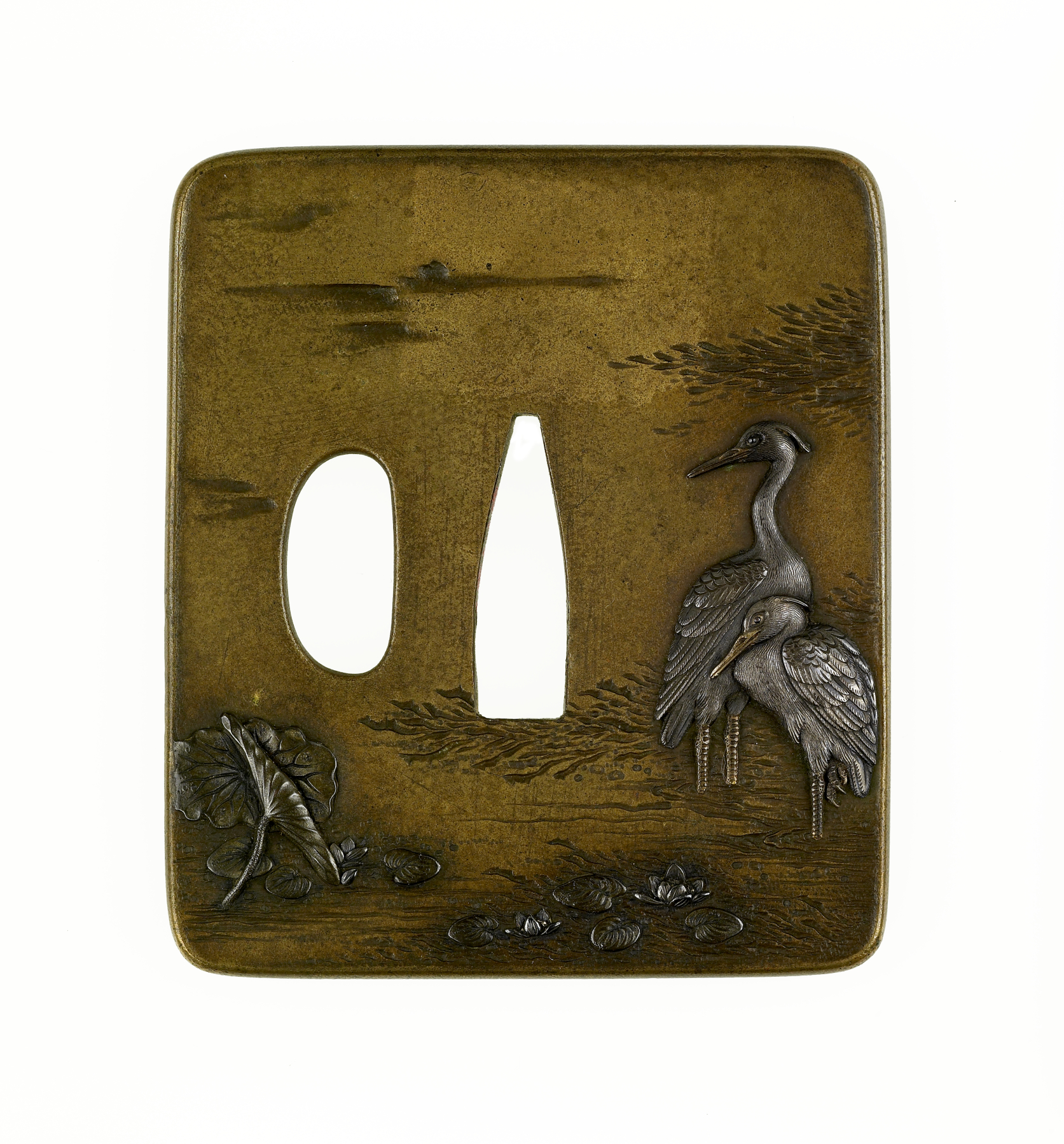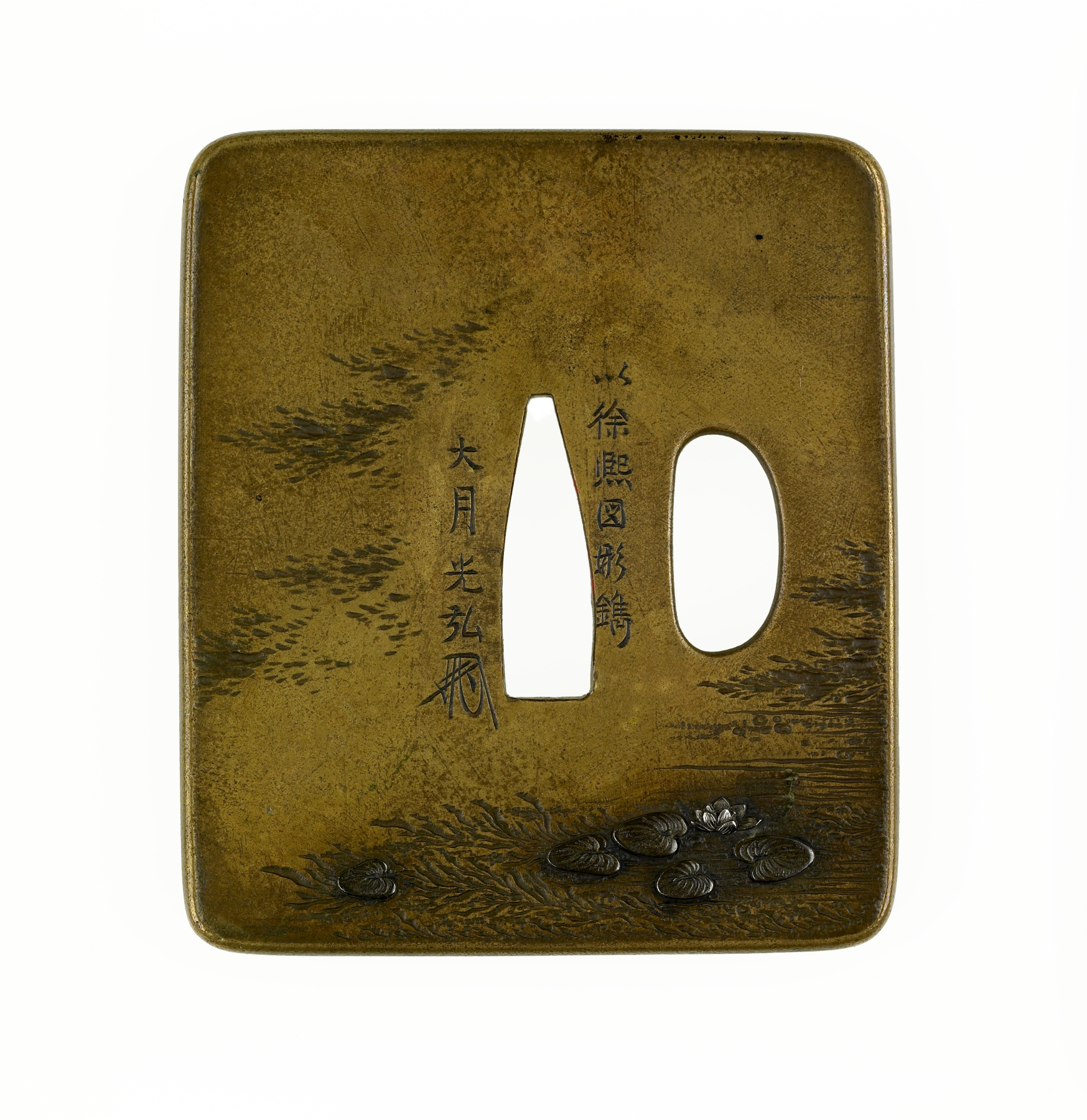Tsuba with Herons in a Lotus Pond
(Japanese Military Armor)
On this tsuba, two heron stand in a lotus pond. The large lotus petals are visible on the left. There is at least one other tsuba like this by Mitsuhiro and one by his father Mitsuoki. The inscription says that the design is after one by the 10th-century Chinese painter Hsu Hsi. This may be a reference to paintings by Hsu Hsi of herons and lotus plants in Japanese temple collections, but the composition does not match any known paintings.
Inscription
Provenance
Provenance (from the French provenir, 'to come from/forth') is the chronology of the ownership, custody, or location of a historical object. Learn more about provenance at the Walters.
Henry Walters, Baltimore [date and mode of acquisition unknown]; Walters Art Museum, 1931, by bequest.
Geographies
Japan, Kyoto (Place of Origin)
Measurements
2 1/2 x 2 3/16 x 1/8 in. (6.3 x 5.56 x 0.32 cm)
Credit Line
Acquired by Henry Walters
Location in Museum
Not on view
Accession Number
In libraries, galleries, museums, and archives, an accession number is a unique identifier assigned to each object in the collection.
In libraries, galleries, museums, and archives, an accession number is a unique identifier assigned to each object in the collection.
51.137






